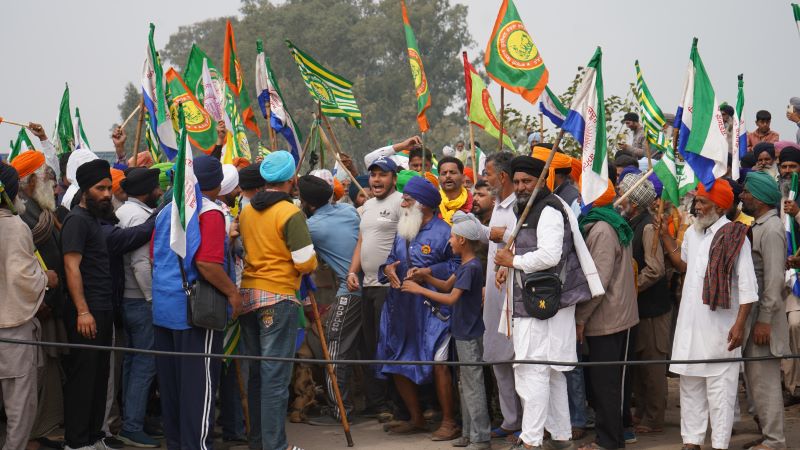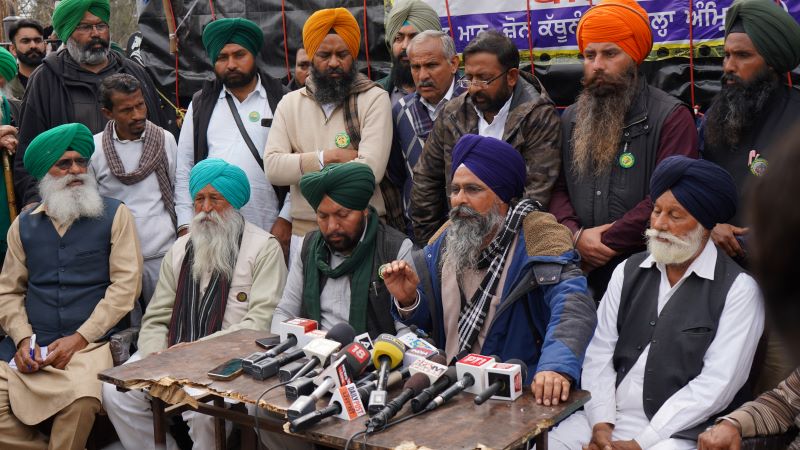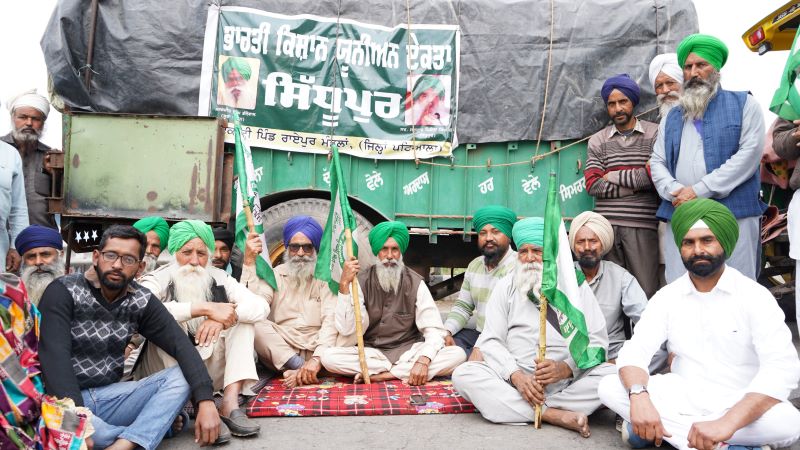Indebted farmers, facing falling yields and water scarcity, want legally guaranteed price support for more crops – but that may not fix their climate woes
Indian farmers – struggling with erratic weather, shrinking water supplies and falling incomes – have quit their fields in a major new wave of protest, and plan to keep up the pressure on the government ahead of national elections starting on April 19.
Debt-laden growers want an existing government procurement system to be made legally binding and to raise the minimum price for a wider range of crops – which could help them move away from thirsty rice and wheat farming.
But some agricultural analysts argue that bolstering the Minimum Support Price (MSP) for produce would not resolve the wider climate problems farmers face, nor ease demand for scarce water resources.
Expectations mount as loss and damage fund staggers to its feet
Deedar Singh, a 50-year-old farmer from Patiala, joined a march towards Delhi in mid-February and spoke to Climate Home at a camp on the Punjab-Haryana border, 200 km from Delhi. He participated in a similar mobilisation back in 2020 that lasted for just over a year.
With a family of nine to support, he complained that his five-acre landholding and meagre income of 200,000 rupees per year ($2,400) cannot provide a decent quality of life, especially as weather extremes worsen.
“If untimely rain destroys our rice or hot temperatures shrink the wheat grain, our crops are ruined, leaving us unable to even cover the costs of the next cropping season,” said Singh. Most people in his village rely on financial support sent by their children who have migrated abroad, he added.

Farmers gather at the Shambhu border, between Punjab and Haryana, to burn effigies of political leaders and shout slogans in support of the protest, February 27 2024 (Photo: Kanika Gupta)
Globally, India accounts for 10% of agricultural output and is the second-largest producer of rice and wheat. It is also the biggest consumer of groundwater. Its 260 million farmers depend heavily on depleting water reserves to irrigate their crops.
That means they are also struggling with climate change, as about 65% of the country’s cropped area depends on rainwater. Erratic rainfall and shorter winters are harming yields, with heavy downpours causing flooding and a sudden spike in temperatures a year ago causing wheat grain to shrink.
The Indian Council of Agricultural Research (ICAR) reports that for every 1C increase in temperature, wheat production suffers a significant decline of 4-5 million tonnes.
Debt drives suicides
Water resources are running low and farmers’ input costs have soared – yet the government-administered minimum support price (MSP) has not risen accordingly, said Ramandeep Singh Mann, an agriculturist and member of Kisan Mazdoor Morcha, an umbrella body spearheading the current protest.
That has left farmers with no money to pay for contingencies and has forced many to take on high levels of debt, he said.
“At some point your back breaks. When that happens, there is no other solution but to take extreme steps,” he added, referring to suicides among indebted farmers.
To boost falling yields, farmers are using more inputs like water and fertilisers, leaving them with higher production costs and lower profit margins.
Some states have provided free or subsidised electricity, as well as loan forgiveness for debt-strapped farmers, but since 2014, only half of the intended waiver recipients have benefited, according to a study by the State Bank of India.
These woes have fuelled a growing wave of protest, as farmers feel they have no other recourse.
Nonetheless, Sardara Singh Johl, a 97-year-old agricultural economist from Ludhiana and former vice-chancellor at Punjab Agricultural University, said the latest mobilisation was unlikely to result in the dialogue required to address the broader problems facing farmers.
“They already have MSP for wheat and rice, and these are high-paying crops. Even if you reduce the price risk with MSP, what can you do about the other uncertainties?” he asked.
In mid-February, at the last round of talks with the government, ministers proposed to purchase five additional crops – moong dal, urad dal, tur dal, maize and cotton – from farmers at an MSP for five years through central agencies, but farmers rejected the offer.
Jagjit Singh Dallewal, leader of the non-political Samyukta Kisan Morcha group, which is also involved in organising the farmers’ protest, said the proposal would mainly benefit farmers willing to switch from paddy or wheat to other crops and would not ensure a stable income.

Farmer leaders give a press conference at Shambhu border, between Punjab and Haryana, on February 27 2024. Photo: Kanika Gupta)
Water reserves shrink amid over-use
Economist Johl argued that, irrespective of its profitability, rice is no longer a suitable crop for Punjab as its water table recedes to a dangerously low level.
A study by Punjab Agricultural University found that between 1998 and 2018, groundwater levels in the region had dropped drastically, from 10 metres below ground to 30 metres, largely due to a shift from traditional canal irrigation to widespread adoption of tube wells for water extraction.
Farmers are aware of Punjab’s dwindling water resources, said Mann, but they need guaranteed price support for more crops in order to shift away from water-intensive rice cultivation.
“They know that if they are able to earn as much as they do from paddy, they will grow other crops. But without fair support of MSP, it is hard to make that switch,” he said.
In Somalia, Green Climate Fund tests new approach for left-out communities
Uday Chandra, a professor of government at the Georgetown University in Qatar, said key food-supplying states like Punjab have struggled to get their problems heard and dealt with by the national government.
“The problem is that what the Punjab farmer wants isn’t sustainable,” he said, referring to
Read More

